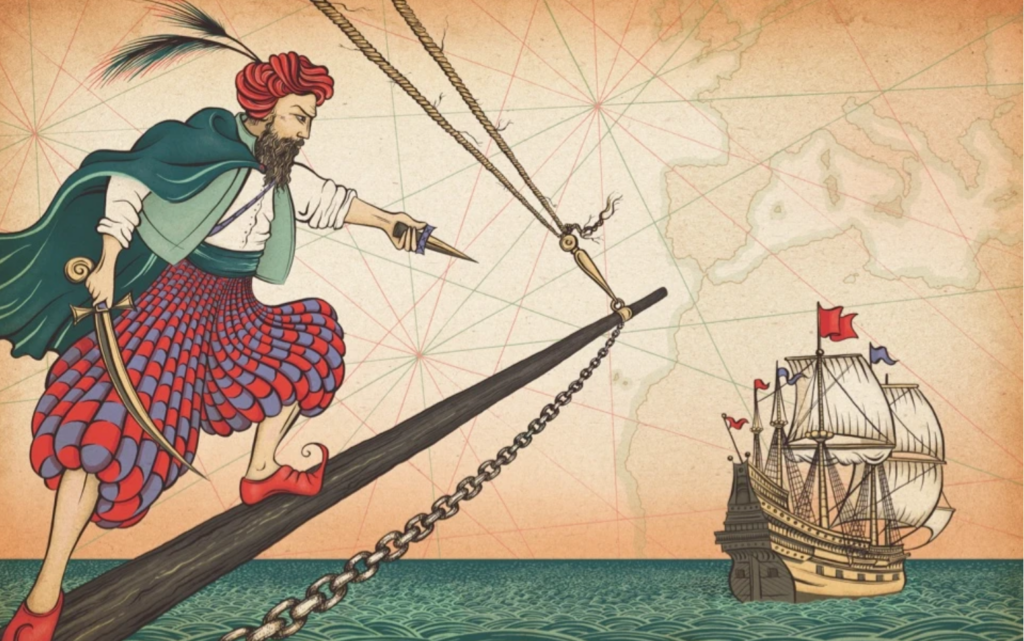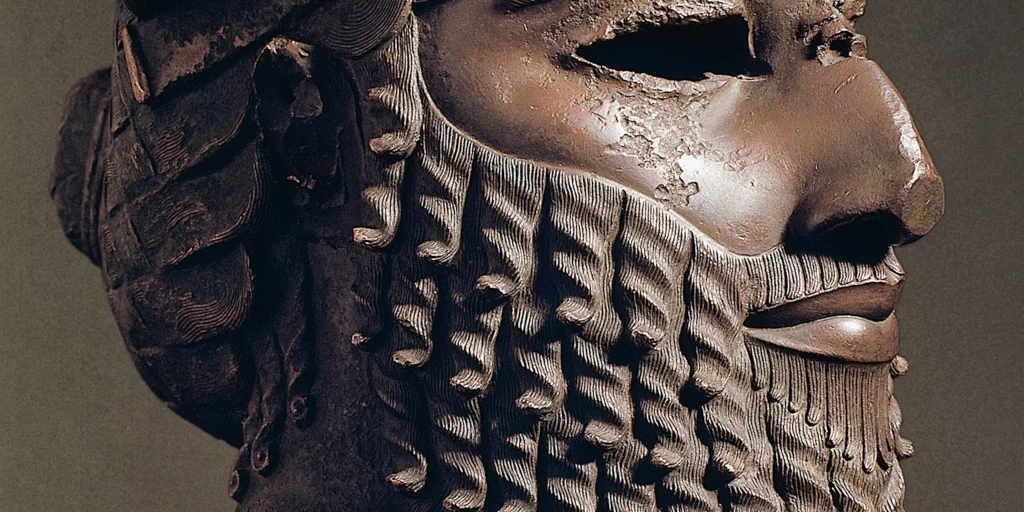Every Halloween, a lot of children dress up as witches, superheroes, and pirates. But there’s one pirate that is beloved by a great number of people: Jack Sparrow.
Jack Sparrow is the anti-hero protagonist of the Pirates of the Caribbean movies, famously played by Johnny Depp. But did you know that Jack Sparrow is based on a real pirate from the Golden Age of Piracy?
The real Jack Sparrow is based on the 17th-century English pirate John Ward who was also known as Jack Ward or Birdy.

Who Was John Ward?
Pirates were notorious in the 17th and 18th centuries but there aren’t many accounts of them. There aren’t any first-hand narratives about their adventures.
But what little historical reports existed were enough to paint an interesting picture of their lives and exploits.
Ward is no different in this respect. Though he has no extensive biographies written about him, there were printed pamphlets that provide glimpses of his exploits.
Research by Hayley Cotter of the University of Massachusetts Amherst looked into some of these pamphlets and proclamations to get a picture of piracy in the 16th and 17th centuries. The paper is titled Robbers of the Sea: Piracy in Proclamations and Pamphlets, 1558-1675.
The authors cited poverty as the primary reason for piracy: “For many recruits, turning to piracy appears to have been an improvised, urgent response to economic and social conditions, fuelled by grievances over employment, pay, and working conditions.”
Another passage reads: “Men such as the infamous John Ward, who originally worked as a fisherman, were certainly drawn from this demographic.”
The paper also indicated that Ward became a subject of a royal proclamation and three pamphlets in 1609. Both documents provided some information about the pirates who roamed the seas during those times.
So, who was John Ward? Ward was born in 1553 in Faversham Kent, a coastal market town in southeast England. Because of his proximity to the sea, he became a fisherman during the early part of his life. Many speculate that his work influenced his decision to later become a pirate.
“Legal” Piracy
When he started, Ward was engaged in “legal” piracy or privateering. Pirates involved in privateering were called Queen Elizabeth I’s Sea Dogs.
Queen Elizabeth I commissioned private ships that were allowed to legally plunder ships from a country that was considered an enemy. During the Golden Age of Piracy, British and Spanish relations were turning sour. Spanish ships were often the target of British privateers.
The sea dogs had to be armed with the Crown’s Letter of Marque. This symbolized its authority to plunder enemy ships. A percentage of the proceeds from the privateering was given back to the monarchy.
By 1585, the animosity between the two countries had reached a tipping point. Privateering helped fund the British army during the Anglo-Spanish War.
Ward was a privateer from 1588 until 1603 when James I assumed the English throne and subsequently ended the war with Spain. Many privateers wanted to continue the lifestyle but they no longer had valid licenses. So, they simply became pirates and Ward was one of them.
How Ward Turned To Piracy
It is said that Ward officially decided to become a pirate at a tavern. According to a pamphlet written by Andrew Barker, an alleged captive of Ward, the pirate was so disgruntled with the world that he described it as “scurvy.”
The pamphlet quoted Ward as saying: “This night, when the Captain and Officers shall conjecture nothing but that we are drawing dry the pot, we’ll be diving arm deep in the Fugitives bags.”
Ward and 30 of his shipmates stole a 25-ton vessel and sailed to the Isle of Wight. Ward was elected captain. It was among the earliest reports of a pirate leader being chosen through elections.
Ward sailed through the Mediterranean, reached Algiers, then Morocco. He took captaincy of a few ships and plundered several.
More successful pirate activities ensued in 1606. Ward wasn’t picky with his targets. It could have been a smaller vessel like a dhow carrying Catholic slaves along the Strait of Gibraltar, or larger merchantmen carrying various goods.
The pirate also had an arrangement with a troop commander from Tunis, Tunisia named Uthman Dey or Othman Dey. Dey had the privilege of going through the looted goods first for commerce.
By 1607, Ward had at least four vessels: the Gift, Little John, Rubi, and Carminati. One day, as the fleet set out towards the Adriatic Sea, a violent storm scattered the ships. Ward was onboard the Gift and only found Rubi after surviving the storm.
The Great Plunder
Ward was low on supplies and needed a major robbery.
The Gift and the Rubi, which were respectively 400 tons and 200 tons, had their sights on the Reniera e Soderina which weighed between 1,400 to 1,500 tons. Although the ship they were targeting was much bigger, Ward and his mates remained unfazed.
The two-vessel fleet attacked the Venetian carrack Reniera e Soderina in the waters between Cyprus and Turkey on April 26, 1607. The bigger ship’s size became a disadvantage in the fight because it was more tricky to maneuver. As a result, the bigger ship found it difficult to hit either of Ward’s vessels.
Meanwhile, Ward’s crew hit the Reniera e Soderina at least five times. With the Venetian vessel badly damaged, Ward ordered the Gift and Rubi to move closer and readied his men to board and commandeer the larger ship.
At first, the crew of the Reniera e Soderina was prepared to fight Ward and his men. But a chain shot from Rubi violently killed two Venetian men. This prompted a carpenter aboard the Reniera e Soderina to convince the captain to surrender.
Barker’s famous pamphlet claimed that the haul from the large carrack was worth at least £2 million. England downplayed the value and said that it was only worth £500,000.
The government of Venice didn’t confirm an amount but declared that it was ready to go to war with England because of Ward’s action against the Venetian vessel. The Venetian Ambassador in London, Secretary Esposizioni, called Ward the “greatest scoundrel that ever sailed from England.”
When he returned to Tunis, Ward retrofitted Reniera e Soderina and turned it into a fearsome warship.
A Change in Name and Religion
In March 1608, a wrecked ship was spotted near the coast of Greece. People thought it was the Reniera e Soderina and that Ward had died.
It was later revealed that Ward asked for a royal pardon from King James I of England. The monarch rejected the plea because England almost went to war with Venice because of Ward’s criminal activities.
Ward then traveled back to Tunis, relying on Dey’s promise of protection. Dey wasn’t just the military leader of Tunis, he was also its governor from 1593 to 1610. Interestingly, he held these positions while engaging in piracy-related activities. Indeed, Dey was powerful and influential.
Out of respect to Dey, Ward converted to Islam and adopted the name Yusuf Reis and the nickname Chagour or Chaour. Since he was now a Muslim, he got married a second time to an Italian woman. While living with her in Tunis, Ward continued to send money to his wife in England.
By 1612, Ward had retired from a life of piracy and lived in luxury with his family in Tunisia. There were no records of children born to either of his wives. He died in 1622 at the age of 70.
The Legacy of the Pirate John Ward
Ward was condemned in England, especially since he turned to Islam and became a Barbary pirate.
There were various pamphlets about him and ballads about his adventures. A play was also written about him entitled, A Christian Turn’d Turk by Robert Daborne.
Some Englishmen who saw Ward in Tunis described him as having a swarthy complexion and beard. He was known for always being drunk and swearing.
Are those descriptions familiar? It sounds a little bit like Jack Sparrow from the Pirates of the Caribbean film series.
Giles Milton, a British writer who specializes in narrative history, confirmed that Jack Sparrow is based on John Ward. Aside from his earlier nicknames of Jack and Birdy, Ward was also sparingly called Sparrow.
Conclusion
John Ward is among the most notorious English pirates in the world. Jack Sparrow is one of the most famous pirates in the fictional world that was based on Ward’s character. The two have fame in common as Sparrow is loosely based on the historical Ward.
Ward was just one of the thousands of pirates during the Golden Age of Piracy but he gained notoriety for almost causing a war between England and Venice. After what he did, he still dared to ask for a pardon from the king. After all, he wouldn’t be John Ward if he hadn’t tried.

